New Faculty in 2019
POSTED ON: December 12, 2019
Academic search committees across The Cooper Union have been busy over the last year working to identify leading candidates to fill several full-time faculty positions. This semester, the academic community welcomes one new assistant professor in the Faculty of Humanities and Social Sciences, four fulltime faculty members in the School of Art, and two assistant professors in The Irwin S. Chanin School of Architecture, each bringing a wealth of expertise in disciplinary research, teaching, and practice.
FACULTY OF HUMANITIES AND SOCIAL SCIENCES
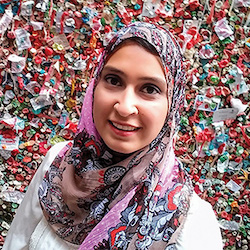
Loujaina Abdelwahed joins HSS as a new full-time assistant professor of economics. She earned her doctorate at the University of Illinois at Chicago. Her research includes work in international development and empirical macroeconomics, with a specific focus on windfalls from foreign aid and natural resources and their impact on fiscal policy in developing countries.
She received her B.A. and M.A. in economics from the American University in Cairo. Abdelwahed previously worked as an economist at the Macro Fiscal Policy Unit in the Egyptian Ministry of Finance, where she was responsible for projecting the government debt and domestic and foreign interest payments over the medium term.
On joining Cooper, Abdelwahed says, she is most drawn to the emphasis on liberal arts education alongside professional training in architecture, art, and engineering: “It is important to be exposed to a wide range of disciplines to broaden your horizon.” She was also immediately impressed by the caliber of students and their willingness to explore areas outside their disciplines. “I am looking forward to more interaction with such a talented pool of students,” she says. “In addition to teaching, I look forward to working on research projects with students who might be interested in exploring economics as a potential field for graduate school.”
SCHOOL OF ART

Fia Backström is an interdisciplinary artist and writer whose work employs disparate media from a wide range of sources to explore what constitutes collective subjectivity and the social bond. Her work frequently moves between ecological scales with fluency—in one moment exploring global environmental degradation, in another searching for its traces in the human body. She represented Sweden in the Venice Biennale 2011 and was included in the Whitney Biennial 2008 and in Greater New York— MoMA PS1. Her work has been shown in numerous international institutional exhibitions, including at New York’s Museum of Modern Art, the Centre George Pompidou in Paris, Stockholm’s Moderna Museet, and the Serpentine Gallery in London. In 2018 she received the Bernard Heidsieck Literary Prize—Centre Pompidou.
As a teacher she values a classroom that eschews hierarchy while promoting creative forms of collaboration as students make physical work or performance-based work. Noting the draw of live performance, she says, “I think presence is increasingly important as we are moving into deeper digital experiences. I think there is a desire and longing for people to be in the same room and for bodies moving and voices articulating.” She joins Cooper as an assistant professor of art and hopes to provide students with a model for being an artist responding to the world’s circumstances, so they can become the artists they are supposed to be. She anticipates that her students’ ideas will likewise inform her art: “I hope to learn from their generational experiences and perspectives and specific understanding of the world and of art.”

This fall, interdisciplinary artist Coco Fusco joins the School of Art faculty as guest associate professor. Her video and performance work, often the result of extensive archival research, investigates the continued impact of colonialism on power and knowledge; the intersection of gender and militarism; and globalism’s role in reinforcing stereotypes. For one of her best-known works, “The Couple in the Cage: Two Undiscovered Amerindians Visit the West,” Fusco collaborated with Guillermo Gómez-Peña to stage a performance where they played two people from a fictive island in the Gulf of Mexico on public view in a cage. Using the 19th-century practice of displaying colonized peoples as objects of both scorn and desire, the piece demonstrated how the category of science has been manipulated to reflect racist and sexist ideas that inform knowledge today.
She recently noted that academic institutions’ positions toward performance as art have changed radically over the last twenty years. “In the ’90s I had to struggle to put a performance course into the curriculum of the school where I taught,” she says. “Now it’s expected that courses will be offered and students are exposed to more performance. I think it is great that institutions are catching up!”
Writing is an essential part of Fusco’s practice. Her publications include English Is Broken Here: Notes on Cultural Fusion in the Americas (1995), The Bodies that Were Not Ours: And Other Writings (2001), Dangerous Moves: Performance and Politics in Cuba, other books, and dozens of articles.

Cristóbal Lehyt, an artist hailing from Chile and educated there and in New York, has joined the School of Art as an assistant professor. His work, which has been collected by the Museum of Modern Art and the Museum of Contemporary Art in Chile, includes drawing and painting (frequently of spectral figures floating in space), sculpture, and photography. Regardless of medium, his art raises questions about the limitations of representation—be it visual or linguistic—and the ways that mythology and other forms of received knowledge further obscure understanding. Not surprisingly, in the classroom Lehyt is dedicated to transparency. He strives to make his classroom “as open as possible.” He says, “it is important for me to historicize and contextualize the different aspects of their practice and ask them what they want their work to be—give them as many possibilities as I can, based on what is important to them. All of this while stating positions I think are crucial for them to consider.”
Much of Lehyt’s practice forces viewers to be conscious of themselves in relation to the art. As part of “Weaving In & Out,” an exhibition at Tapestry in East Harlem, he leaned his photographs of northern Chile against the wall and placed them at a 45-degree angle, making viewers aware of each photo as an object in itself. For “Iris Sheets” at the Americas Society, he constructed an accordion fence out of sweetgum and oak logs that had been soaked in Chilean red wine. Visitors had to navigate through them to see the other works on view. His strategies are born from a belief that presence is crucial in all art mediums, and that “performance is particularly well positioned in making an encounter a significant lived experience.”
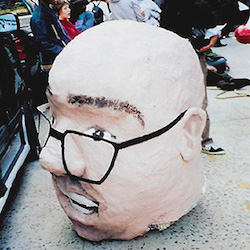
Doug Ashford, formerly a proportional-time faculty member, is now an associate professor of art. He is a 1981 School of Art graduate and has taught here since 1989. Doug’s principal art practice from 1983 to 1996 was Group Material, an art collective that used exhibition design and social practice in museums and other public spaces to imagine new political forms. Teaching in the Saturday Program as a student in the early 1980s inspired Ashford to explore how understandings of art and political liberation are joined. First as an art teacher in the New York City public schools and then as a member of Group Material, he has always been striving in his work to reform the failed exclusivity of the art museum and other institutions.
“The Saturday Program was my introduction into the inequities and debt that the system of higher education reproduces,” he recalls. “The history of the Saturday Program is one of thoughtful reflection and action in the face of the cultural disenfranchisement of most American artmaking. And now, 50 years after its founding by students of The Cooper Union, the results are clear. Our school, other schools, our museums, and the cultural apparatuses of NYC itself are all partially transformed. But this work is far from finished.” Ashford says his students want to pursue their artistic practice without it being an economically managed category of experience or adhering to institutional logic. “This allows the class to consider what we don’t yet know or want, or don’t yet know we need: things beyond the ethical failures of society that we are experiencing today.”
THE IRWIN S. CHANIN SCHOOL OF ARCHITECTURE
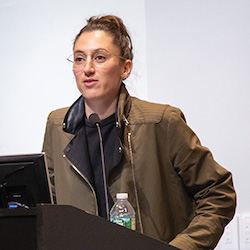
Nora Akawi joins Cooper as an assistant professor of architecture. She is a New York–based architect whose work is focused on the various forms of exclusion orchestrated by contemporary colonial powers and their implications in architecture design, history, and representation. Prior to joining The Cooper Union, Akawi taught graduate urban design studios and history/theory courses at the Graduate School of Architecture, Planning, and Preservation (GSAPP) at Columbia University. Beginning in 2012, she served as director of Studio-X Amman with the Columbia Global Centers | Amman and Columbia GSAPP, where she led public programming, educational, exhibition, and publishing projects focused on architecture in the Arab world.
Akawi explains that she sees the academic institution as a space for students to travel through and learn from—and one where they can imagine other modes of existence. “In my teaching, I aim to work with students on questioning established repertoires and archives of architectural canons, especially those that participate in centering exclusive and exploitative modes of inhabitation.” She is also looking forward to collaborating on shared projects with students and colleagues in the fields of architecture, art, engineering, and the humanities: “The Cooper Union has been leading by example not only as an institution that offers the highest levels of learning, but also as an environment that foregrounds civic engagement, access to education, and academic freedom. I’m grateful and honored to join the school of architecture faculty at Cooper, a program I’ve admired since my introduction to the field of architecture.”
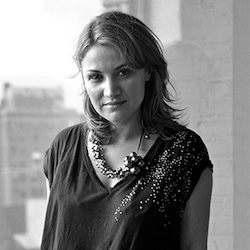
Lydia Kallipoliti also joins Cooper as a new assistant professor of architecture. She is an architect, engineer, and scholar whose work focuses on the intersections of architecture, technology, and environmental politics. She has taught at Cooper as an adjunct assistant professor and returns now after serving as an assistant professor at both Rensselaer Polytechnic Institute, where she directed the master’s program in architecture, and at Syracuse University. Previously at Cooper she served as a senior associate at the Institute for Sustainable Design and as the Feltman Chair in Lighting. Kallipoliti describes herself as a “mixed breed” of engineer and architectural historian. “It’s a field of discomfort because I have both a technical and a scholarly background, but I’m motivated by this discomfort.” Her research has led her to collaborate frequently across disciplinary boundaries: “Being part of a humanities community and going to conferences as a theorist, but also working with scientists, genetic engineers, and biologists—that really excites me.” In the classroom, Kallipoliti prefers to engage her students through project-based work. “I think this motivates the students, to have some scope beyond instruction, where the course is a collaborative platform or a think tank for producing a project, whether it’s an exhibition, an article, or a book project.”
“I love The Cooper Union,” she says. “I love the fact that it is one of the only institutions that will eventually return to providing full tuition. It has a very special history. I really love that there’s a diverse student body and that the students somehow have the spirit of The Cooper Union inside them, the traditions and legacies that remain very much alive. I think it’s an exciting time for the school of architecture because there’s such an amazing collection of faculty members.”
…AND NEW DEANS
Faculty of Humanities and Social Sciences, The Irwin S. Chanin School of Architecture, and Albert Nerken School of Engineering strengthen their administrations to better support diversity and learning.
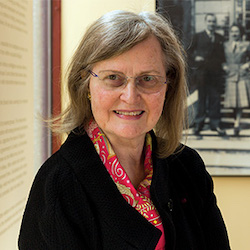
Anne Griffin has assumed the role of Acting Dean of Humanities and Social Sciences, succeeding Peter Buckley who stepped down from the position at the end of the semester this past May. Griffin has been a full-time faculty member in HSS since 1978, teaching both the core curriculum and advanced electives in political science. Most recently, she successfully chaired the HSS faculty search and served on the 2019 Cooper Union Grant Review Committee.
Griffin will also serve as Acting Dean while the Council on Shared Learning completes its work and makes recommendations on how best to address issues of diversity, decolonization, and pedagogy within the curriculum. The council will seek to elevate the Humanities and Social Sciences which, according to Laura Sparks, are a “critical element of our students’ academic community, as it is in these classrooms where all of our students come together, regardless of professional discipline.”
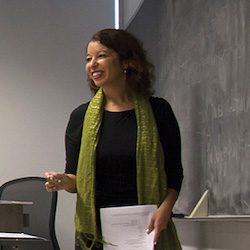
Nada Ayad has returned to Cooper as the new Assistant Dean of HSS, a position that was created this semester to assist the faculty’s efforts on addressing those issues of diversity and decolonization. Ayad was a postdoctoral fellow in comparative literature at Cooper before taking a role as assistant professor of world literature at the Fashion Institute of Technology in 2018. Her research focuses on 20th and 21st century Arabic literature, women of color feminisms, theories and literatures of decolonization, and translation studies. She has also translated contemporary cultural texts from French and Arabic.
In her new role, Ayad will support the dean’s office as a resource for faculty and staff; provide support and leadership by partnering with faculty on issues of diversity and decolonization; support faculty, staff, and student diversity and inclusion efforts across the institution; and also provide leadership support for evolving Cooper’s interdisciplinary learning initiatives.
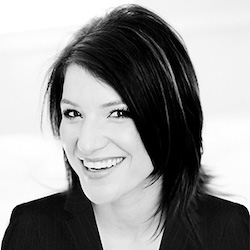
Hayley Eber has joined as the new Assistant Dean of The Irwin S. Chanin School of Architecture. Eber is an architect, designer, and educator who teaches as an adjunct professor at The Cooper Union and is the principal of Studio Eber (formerly EFGH). She has stepped in to fill administrative duties as Elizabeth O’Donnell prepares to transition out of her current role as associate dean.
Eber previously worked at Diller Scofidio + Renfro in New York, where her experience ranged from temporary installation and media work, performance, architectural competitions, and large-scale urban projects, most notably the High Line. Prior to joining DS+R, she worked at Eisenman Architects in NY on The Arizona Cardinals Stadium and the Holocaust Memorial in Berlin and at Wiel Arets Architects in Maastricht on the Utrecht University Library. She holds a Masters in Architecture from Princeton University School of Architecture, a Bachelors of Architecture from The Cooper Union, and a BAS from the University of Cape Town. She previously taught at Princeton University (2013-19) and Columbia University GSAPP.
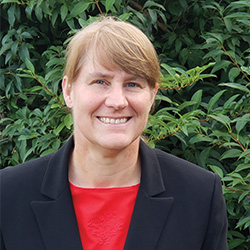
Lisa A. Shay joins as Associate Dean for Educational Innovation at the Albert Nerken School of Engineering. She comes to Cooper from the U.S. Military Academy at West Point, where she was Director of the Electrical Engineering Program, with responsibility for ten military and civilian faculty who taught 30 electrical engineering courses to over 500 cadets each year and administered 14 laboratory facilities with equipment valued at more than $10 million. She was also Chair of the Laboratory Resources Committee responsible for managing all laboratory equipment across ten academic departments.
Shay recently retired from a distinguished career of 30 years in the United States Army. During this time, she served in numerous leadership positions while stationed in the United States and abroad. She retired with the rank of colonel. Shay has authored three book chapters, a Michigan State Law Review article, and over 30 articles in peer-reviewed journals and conference proceedings. She pursues interdisciplinary research among the fields of engineering, education, law, policy, and ethics. Her interests include developing and using technology to benefit society and humanity across the world and developing engineers who act with a sense of civic responsibility and social justice.




